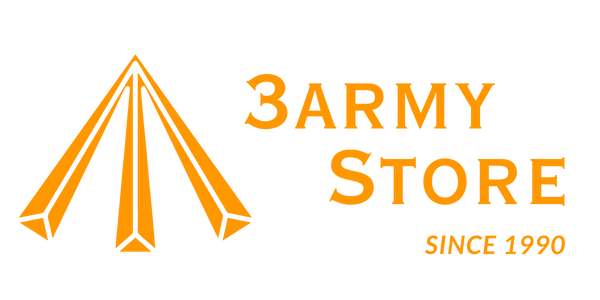
By Lukas Kaffer – Great Male Leopard in South Afrika | 取自Lukas Kaffer ─ 南非雄豹
Camouflage is a brilliant example of what humans can adapt from the animal kingdom. Camouflages are used by animals either to blend into their surroundings, or to mimic something else to increase their chances of survival. For example, leopards have disruptive patterns on their body to blend into the tall grass in the wild, and butterflies have patterns on their wings to deter predators by pretending to be bigger and stronger than what they are.
常說人類能從動物王國學到不少的技能,迷彩技術正正是其中之一。動物為了求生,有不少物種都能利用迷彩融入環境之中,或是偽裝成其他東西。比方說豹會利用身上的點點藏身於草原中,又或者是蝴蝶展開雙翅嚇退獵食者。
The earliest adaptations of camouflage by humans could be found way back in ancient Greek, where some books recorded that Mediterranean pirates could paint their ships with grey for concealment. However, the formal adaptation and invention of military camouflage patterns only came in World War 1, where the French first formed a camouflage corps known as the “camoufleurs” – the pioneers of modern military camouflage. Camouflage in WW1 mainly took place on vehicles and hardware like firearms and helmets, rather than on clothes. Traces of cubism art could also be seen as early camouflage patterns did take a lot of inspiration from them as cubism art breaks down reality into patterns that are difficult for eyes to distinguish – perfect for disruptive camouflages.
偽裝色迷彩的應用早就在古希臘有所記載。有說,當時的海盜能把船塗上灰色以匿藏己蹤。儘管如此,迷彩圖案最早在戰爭中有系統的應用是發生在第一次世界大戰的法國。當時的法國正值立體主義藝術的洗禮—立體主義主張把人眼所見的事物打破再重新組織,畫出似虛似實的作品。這種風格被應用到了當時的迷彩圖案中,法國先是組織「Camoufleurs」專門負責迷彩相關事務,英德等各國亦緊隨其後。當時的迷彩主要應用在頭盔、槍械、坦克等硬件,在衣料上的應用未有普及。

Albert Gleizes – L’Homme au Balcon (Man on a Balcony), 1912 | Albert Gleizes ─ 陽台上的男人,1912年

Taken from the Imperial War Museum – Australian war loan propaganda, 1918 | 取自帝國戰爭博物館 ─ 澳洲的戰爭債券宣傳品,1918年

Taken from the Imperial War Museum – WW1 German Stahlhelm with a visible dent | 取自帝國戰爭博物館 ─ 一戰的德軍頭盔,有明顯的凹痕
In modern militaries, disruptive camouflages that blurs the borders of objects are widely used for the same reason that animals used them – to increase their chances of survival. Military forces, companies and scientists have created many patterns of camouflage and countless variations of colour combination. Nowadays, digital patterns with different colour schemes are widely used around the world, such as the American ACU, Canadian CADPAT and the Chinese Type 07 Camouflage.
現代軍隊廣泛地應用了形形色色的干擾性迷彩,有效地將物件的邊界抹去而達到匿藏的效果。各國各地的軍隊、公司和科學家都發明了許多的迷彩圖案以及無數的色彩配搭,以滿足不同環境所需。現今較受歡迎的迷彩樣式之一是數位迷彩,不論是美軍的ACU、加軍的CADPAT還是解放軍的07式通用迷彩,都是基於數位迷彩樣式的。

From the Internet – Type 07 Camouflauge | 取自網絡 – 07式軍服

By Sue Harden – Soldier in ACU | 取自哈登 – 穿著ACU的軍人
Besides its combat oriented characteristics, the unique, sometimes eye catching aesthetics of camouflage clothing are also preferred by many as a choice of casual wear. Next time, we will be digging deeper into the stories behind different patterns.
迷彩原來的目的是為了在戰鬥中不被人輕易發現,但亦有不少人喜歡在日常穿著迷彩服,喜歡迷彩服的獨特。在未來的文章中,我們會更深入的探索各種迷彩的有趣故事。
———————————————————————————————————————————————————
- By original by Lukas Kaffer (Super.lukas); crops and changes by JD – Image:Great male Leopard in South Afrika.JPG, CC BY-SA 3.0, https://commons.wikimedia.org/w/index.php?curid=2650050
- By Albert Gleizes, http://www.philamuseum.org/collections/permanent/51687.html?mulR=21443, PD-US, https://en.wikipedia.org/w/index.php?curid=35037247
- Imperial War Museum, https://www.iwm.org.uk/history/5-facts-about-camouflage-in-the-first-world-war
- By Chairman of the Joint Chiefs of Staff – Flickr: 110712-N-TT977-077, pubic domain, https://commons.wikimedia.org/w/index.php?curid=18370071

